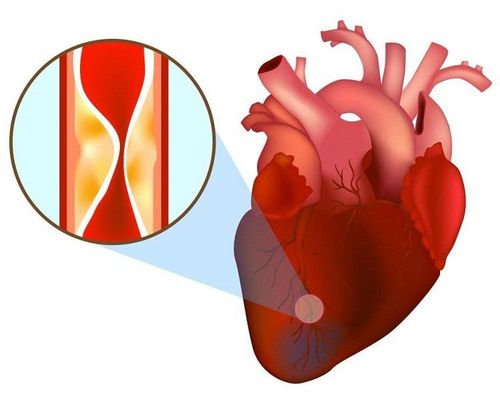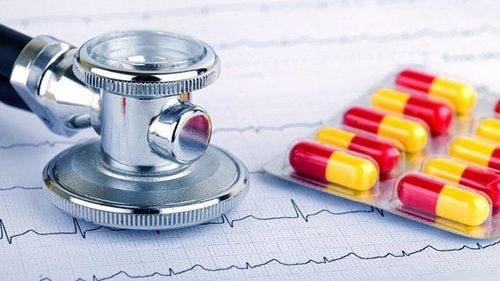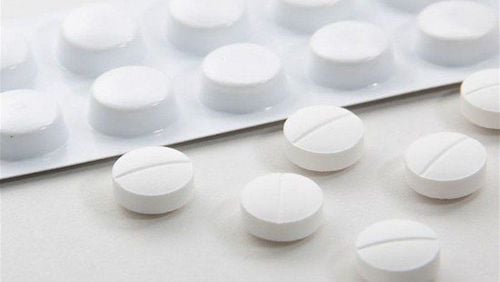This is an automatically translated article.
Posted by Doctor, Doctor Nguyen Hong Son - Department of Examination - Vinmec International General HospitalExercise is not only good for heart health, but also has many other benefits. Therefore, doctors often encourage people to spend time exercising and doing sports every day. However, people with a history of cardiovascular disease should consider choosing appropriate exercises so as not to have the opposite effects, affecting the treatment process.
1. What is the difference between physical activity and exercise?
Physical movement is the contraction of skeletal muscles that form the movement of the body and require energy. Exercise is physical activity that is planned and performed for a purpose or to maintain the health of the body. The health of the body is the goal of every individual when exercising.
2. What is the effect of exercise?
Regular isotonic exercise improves exercise capacity, whereas regular resistance exercise increases endurance. These changes allow a person to exercise at a higher intensity, for a longer time, with a lower heart rate for a submaximal exercise. That is the effect of practice.

Duy trì tập thể giúp trái tim khỏe mạnh và tinh thần được thư giãn
3. What cardiovascular changes occur with exercise?
Exercise causes an increase in heart rate and stroke volume, which increases the cardiac output of healthy people 4-6 times. The increase in heart rate is associated with decreased parasympathetic tone and increased sympathetic tone. The heart rate gradually increases during exercise to the maximum, which can be predicted by the following formula: Maximum predicted heart rate = 220 – age.
Increase in stroke volume of approximately 20% to 50% as a result of increased venous return due to muscle contraction and greater left ventricular emptying due to increased myocardial contractility and decreased peripheral vascular resistance due to dilation pulse during exertion. Vascular beds other than the heart, brain, and stress muscle have vasoconstriction during exercise. This, combined with increased cardiac output, increases systolic blood pressure. Diastolic blood pressure remained unchanged or slightly decreased. Isometric exercise causes an increase in mean cardiac output, largely due to an increase in heart rate. Muscle spasm causes increased peripheral vascular resistance and may increase both systolic and diastolic blood pressure.
4. What long-term cardiovascular changes occur with exercise?
When we exercise to increase cardiac output, long-term leads to mild thickening of the left ventricle. Vasoconstriction and increased afterload during isometric exercise produce a pressure load that leads to ventricular hypertrophy without accompanying ventricular dilatation.

Khi tập thể dục sẽ kèm theo những thay đổi tim mạch
5. How is exercise intensity defined?
Exercise intensity is defined as the energy required to perform physical activity per unit time. This value can be directly measured by respiratory gas analysis to quantify oxygen intake during exercise or can be estimated using a standard regression equation to estimate energy expenditure at each level of exercise. Exercise intensity can also be expressed as resting oxygen demand (equivalent to metabolic METs), one MET equal to the oxygen consumption of a awake, resting person and equivalent to 3.5 ml O2/kg body weight. heavy/min. Light exercise includes activities that require less than 3 METs. Moderate exertion includes activities between 3 and 6 METs and vigorous exertion includes activities requiring more than 6 METs
6. How much exercise is enough to maintain a healthy heart?
Current guidelines from the American Heart Association (AHA) and the American College of Sports Medicine (ACSM) recommend that all healthy adults do moderate-intensity outdoor exercise (eg. : brisk walking) at least 30 minutes, at least 5 days a week, or doing vigorous outdoor exercise (eg, jogging) for at least 20 minutes, at least 3 days a week. Also, do resistance exercise at least 2 days a week. People who want to lose weight or improve their fitness need more exercise. The important thing is that exercise doesn't have to be done all at once, it can add up to 10 or 15 minute intervals throughout the day and count as daily exercise results.

Đi bộ nhanh tối thiểu 30 phút mỗi ngày giúp duy trì tim mạch khỏe mạnh
7. What is the impact of exercise on cardiovascular risk factors?
Exercise has beneficial effects on blood pressure, diabetes, hyperlipidemia and obesity. In addition, exercise is beneficial for endothelial function, thrombosis, inflammation, and autonomic nerve tone (Table 1)
Table 1. Beneficial effects of prolonged exercise on fibrosis risk factors mortar
Comment : CRP: C-reactive protein; HDL: High-density lipoprotein, IL: interleukin; LDL: low-densitylipoprotein; NO: nitric oxide; TG: Triglyceride; TNF: tumor necrosis factor; HA: blood pressure.
8. Is it ever too late to benefit from exercise?
There is no age limit after which patients do not benefit from exercise and available data show that exercise is associated with reduced mortality even in the elderly. In addition, those who were inactive but later switched to physical activity also had a reduced risk of cardiovascular events and reduced mortality compared with those who remained inactive. Exercise slows, but does not prevent, a decline in exercise capacity with age, but it does increase a person's maximum exercise capacity at any age. More importantly, exercise in childhood, but not maintained throughout adulthood, did not improve long-term survival. Therefore, it is very important to exercise regularly and maintain it for a long time.

Tập thể dục giúp kéo dài tuổi thọ ở người cao tuổi
9. Is exercise safe for patients with coronary artery disease?
The answer is yes. Exercise is not only safe for patients with coronary artery disease, but also has many benefits. Multiple meta-analyses from studies around the world show that coronary heart disease patients who participate in a cardiovascular rehabilitation program have a 20% lower risk of death and a 25% lower risk of cardiovascular death compared with those who do not. exercise program. Furthermore, patients who exercised have improved other cardiovascular risk factors such as less chest pain, less myocardial ischemia, increased exercise capacity, and possibly a reduced risk of myocardial infarction. Occur again periodically.
10. How soon after a heart attack can a patient participate in an exercise program?
Clinically stable post-MI patients can begin participating in exercise as part of inpatient cardiovascular rehabilitation within 1 to 2 days of MI. It may be limited to starting with range-of-motion exercises but gradually ramps up to assisted walking. Activities are gradually increased so that most patients are able to do their own activities of daily living upon discharge from the hospital. Current AHA/ACC guidelines recommend the referral of all stable post-MI patients to a formal outpatient cardiovascular rehabilitation program. This is especially true for patients with multiple cardiovascular risk factors and those at high or moderate risk. A supervised exercise program is appropriate for these patients. Stable patients can usually participate in these programs 2 to 3 weeks after MI.

Người bệnh có thể quay trở lại chương trình tập thể dục từ 1 đến 2 ngày sau khi nhồi máu cơ tim
11. Is exercise safe for patients with heart failure?
The answer is yes, it is safe for patients with compensated and non-congestive heart failure. The hemodynamic effects of isotonic exercise (increase in stroke volume, decrease in systolic resistance) are beneficial in patients with reduced left ventricular systolic function and recent data suggest that exercise is safe. Although isometric exercise was previously avoided in patients with heart failure, recent data suggest that mild-to-moderate resistance training is well tolerated in patients with heart failure and confers similar benefits to those with heart failure. healthy people.
12. What are the risk factors for cardiovascular disease with exercise?
Overall, the risk of exercise-related cardiovascular events in healthy individuals is very low, varying depending on age, sex, physical fitness, and medical condition. Most events are related to structural or congenital heart disease in young athletes (eg, hypertrophic cardiomyopathy, coronary anomalies, right ventricular dysplasia) or coronary artery disease in older people. Very vigorous exercise is associated with a transient increase in myocardial infarction and sudden cardiac death, particularly in sedentary individuals with underlying coronary artery disease.

Tập luyện quá sức có thể dẫn đến đột tử do tim
13. Should patients be screened prior to participation in an exercise program?
The American Heart Association recommends screening athletes in high school and college by taking personal and family history, performing a cardiovascular physical exam before athletic competition, and then every 2 to 4 five. Further testing is not necessary if there are no suggestive abnormalities. In general, healthy individuals with no symptoms of cardiovascular disease can participate in a low- to moderate-intensity exercise program and do not require prior screening. However, pre-exercise stress testing should be considered for asymptomatic men over 45 years of age and asymptomatic women over 55 years of age (particularly those with multiple cardiovascular risk factors or diabetes) who intended to engage in vigorous exercise, in those with coronary artery disease and in those with exercise-related symptoms suggestive of the possibility of coronary artery disease.
14. Who can't join the exercise program?
Some special subjects are absolutely not allowed to participate in exercise, including unstable coronary artery disease, decompensated heart failure, symptomatic valvular stenosis, severe hypertension (blood pressure above 180/110 mmHg) and uncontrolled arrhythmias.
The exercise will work very well for everyone, especially those with a history of cardiovascular diseases. However, in order for exercise to be effective, patients need to consider choosing appropriate exercises under the guidance of doctors or health care professionals.
To protect heart health in general and detect early signs of cardiovascular disease, customers can sign up for Cardiovascular Screening Package - Basic Cardiovascular Examination of Vinmec International General Hospital. The examination package helps to detect cardiovascular problems at the earliest through tests and modern imaging methods. The package is for all ages, genders and is especially essential for people with risk factors for cardiovascular disease.
Please dial HOTLINE for more information or register for an appointment HERE. Download MyVinmec app to make appointments faster and to manage your bookings easily.
References
American Association of Cardiovascular and Pulmonary Rehabilitation; http://www.aacvpr.org American College of Sports Medicine: http://www.acsm.org Balady GL, Ades PA: Exercise and sports cardiology. In Libby P, Bonow R, Mann D, et al, editors: Braunwald's heart disease: a textbook of cardiology, ed8, Philadelphia, 2008, Saunders. Glenn N. Levine, MD, FACC, FAHA: Cardiology essentials 2011.













